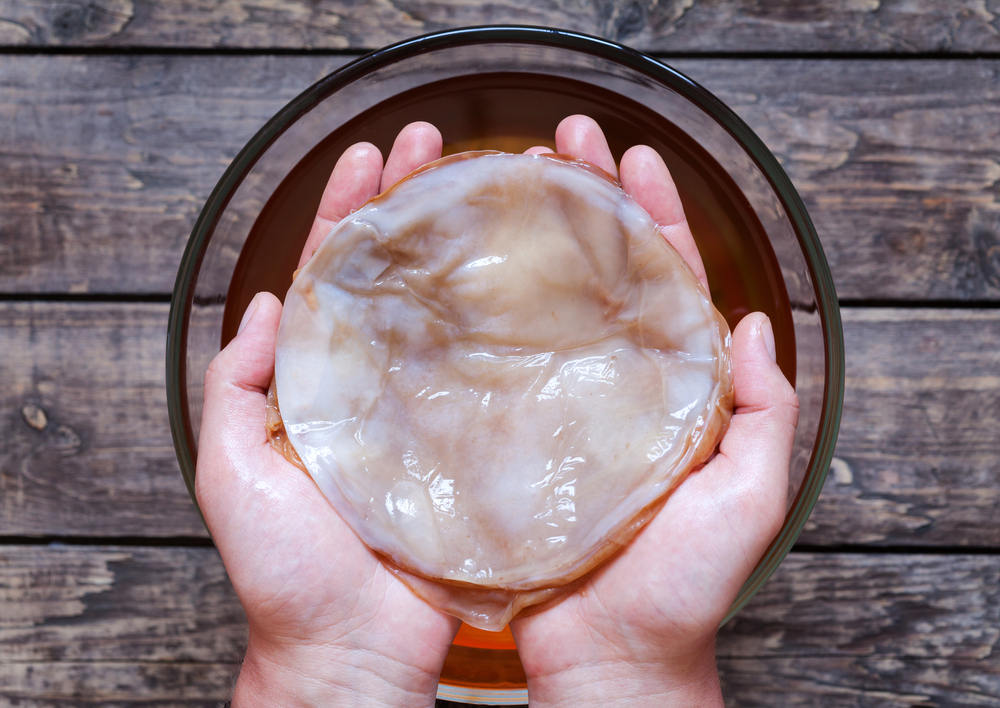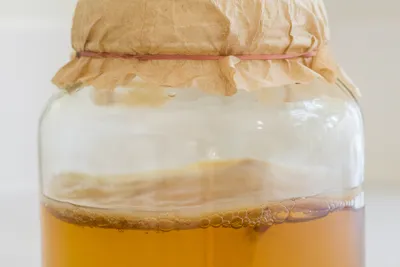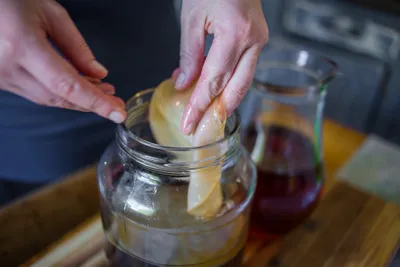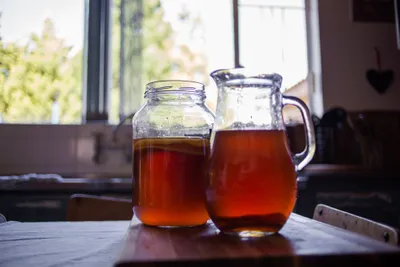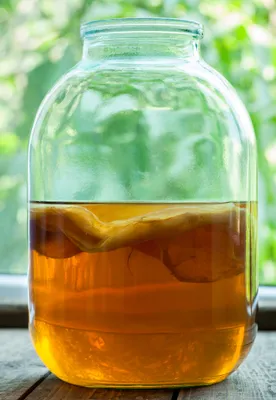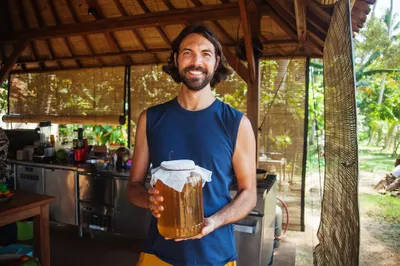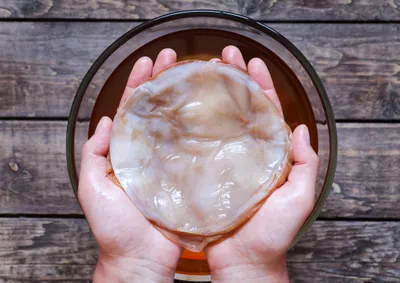The fermentation craze in North America includes kimchi, kefir, and sauerkraut, but perhaps you have yet to sample kombucha! The tart, bubbly, soda-like beverage known as Kombucha has many saying no to soda and yes to this fermented fizzy drink. The bubbly beverage offers great levels of probiotics, which are the healthy bacteria that keep our digestive system operating at optimum efficiency.
While kombucha tastes similar to a fizzy soda drink with a little more tang, it’s actually made from fermentation of green or black tea. Often fruit flavors like citrus and berries or even aromatics like ginger and lavender, are added giving the drink even more appeal. Kombucha is loved by many for its gut-friendly probiotic bacteria, and while the drink can be easily found in most supermarkets and health food shops, those who enjoy a DIY challenge should read on to discover how to make your own healthy, fizzy kombucha beverage at home with these six simple steps…
1. Acquire a SCOBY
One of the most important components you’ll need to make your own batch of kombucha is a SCOBY, which stands for Symbiotic Culture Of Bacteria and Yeast. This may not sound so appealing but it’s this culture that eats the sugars in the tea mixture and is responsible for the creation of the healthy probiotic bacteria.
There are a few ways to acquire your own SCOBY to get started making some kombucha of your own, the easiest way being asking someone else for one. If you know someone else who already makes their own kombucha, they may be able to give you an extra one since each SCOBY produces a ‘baby’ SCOBY every few batches or so. If you don’t know of anyone making their own kombucha, you can purchase a SCOBY online from places like Kombucha Kamp or if you’re feeling really adventurous, you can try growing your own from a dehydrated SCOBY ordered online.
2. Gather Ingredients
In addition to your SCOBY, there are a few other items and ingredients that you’ll need before you get started making your first batch of bubbly kombucha. You will need a 1 gallon glass jar, organic green or black tea, sugar, water, a coffee filter or thin piece of cloth, rubber band, some smaller glass jars and your favourite fruit juice (avoid citrus or pineapple.)
Make sure all your jars are nice and clean before starting because any contaminants can ruin your batch of kombucha and potentially kill your SCOBY. When brewing the sweetened tea for making kombucha, regular white or raw sugar is recommended to get the best results. Many people sweeten their tea with honey but honey is not a recommended sweetener for use when brewing kombucha.
3. Prepare the Sweet Tea
Once all your ingredients and supplies are gathered, the first step is brewing the sweet tea that forms the base of every batch of fermented kombucha tea. For each gallon of water (you’re probably starting off making 1 gallon at a time), use about 8-10 small tea bags and 1 cup of sugar.
Brew the tea in the large 1 gallon jar as you would normally make it, then add the sugar and stir to dissolve. It’s extremely important that you let the sweet tea cool completely before moving on the the next step. If the tea is too hot when you continue, it could kill your SCOBY.
4. Where the Magic Happens
Once your sweetened tea is cooled completely, it’s time to add your SCOBY so it can work its magic. With clean hands, gently place the SCOBY into the jar of tea. It should float but if it doesn’t just let it fall (don’t go trying to fish it out.)
Then, cover the jar with the coffee filter or piece of cloth and secure it into the jar with a rubber band. This will allow the gasses to escape during fermentation while protecting the kombucha from contaminants (and flies…eew.) Place the jar of tea in a warm corner of your kitchen and leave to ferment for about seven days. This time may vary depending on the temperature of your house.
5. Second Fermentation
After the seven days of fermentation, you’ll have a batch of basic fermented kombucha tea which many people enjoy all on its own (it’s the original form of kombucha, after all.) If you want to take things a step further to produce the fizzy, soda like kombucha drink that most people find so appealing, continue on with a second fermentation step.
Pour 1 quart of your favourite fruit juice into the large jar of kombucha tea, then pour this into your smaller glass jars, leaving about an inch of headspace in each of the smaller jars. Make sure you leave at least 1/2 a cup of kombucha tea in the jar with the SCOBY to keep it alive for using next batch. Seal the smaller jars and allow to ferment on your kitchen counter for another 2-7 days, or until carbonated to your taste.
6. Save Your SCOBY
After your first batch of bubbly, refreshing kombucha is complete, don’t forget about your SCOBY! It can be used over and over again to make more batches of this fermented goodness. Once your friends last the delicious beverage you’ve created, they may even want to make their own so saving your SCOBY will allow you to pass on a ‘baby’ SCOBY from your own culture so they can get started.
You can also get pretty creative in the second fermentation phase of making your kombucha soda. Switch up the fruit juices, try different combinations, or add extra aromatics like lemon and orange peel, or slices of fresh ginger and lemon grass. Once you get the basic brewing process under your belt, there’s virtually no limits on what kind of kombucha combinations you can create!
